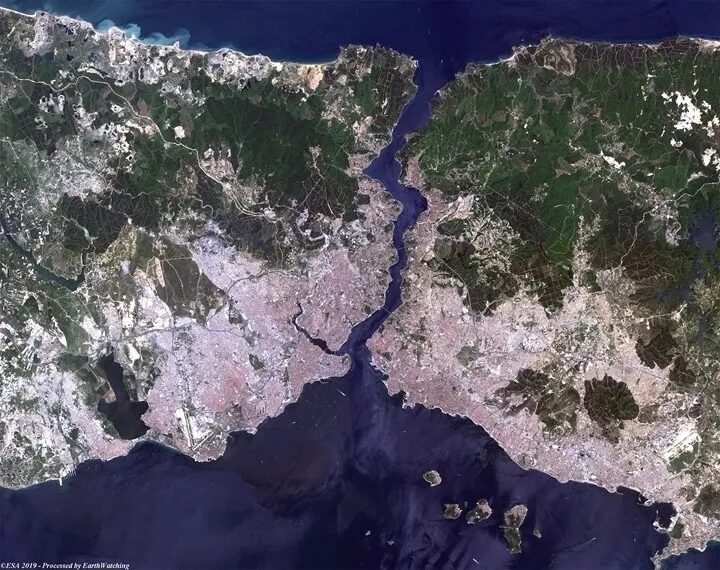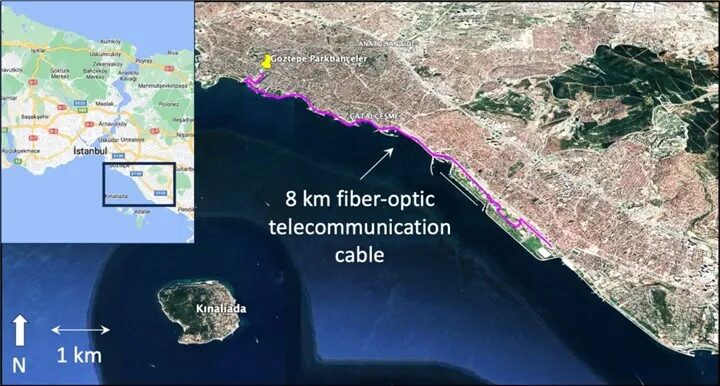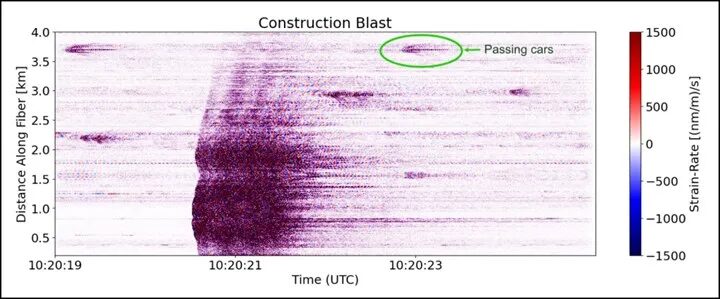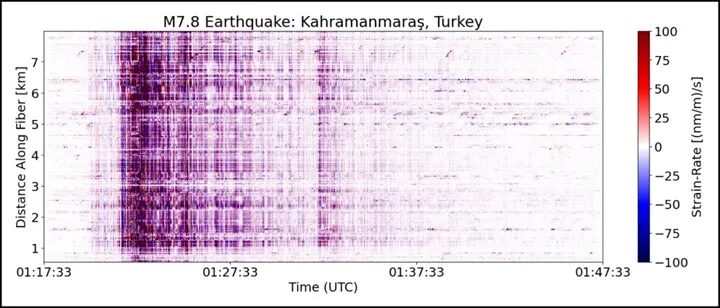The earthquake threat encompassing Istanbul and the Marmara Sea poses significant risks for Turkey. A new study proposes utilizing fiber optic cables to detect earthquakes. Fiber optics, one of the most essential technologies of our time, play a crucial role in telecommunications infrastructure, supporting high-speed internet and the functioning of economies. Interestingly, these structures also have applications in seismology. In recent years, seismologists have been using the same fibers to detect and monitor seismic signals from the Earth. Now, a new study involving seismologist and planetary scientist Ebru Bozdağ and other scientists highlights the potential of fiber optic infrastructure in preparing for a possible earthquake in Istanbul.

Fiber Optics in Earthquake Preparation
Underground fiber optic cables are highly sensitive and can detect vibrations from earthquakes, explosions, and even passing cars. These vibrations exert pressure on the fiber optics, causing them to stretch and compress, which subtly changes the light traveling through the cables.
Using a technique called Distributed Acoustic Sensing (DAS), these changes can be measured to reveal how and where seismic waves are moving underground. This information can help identify the areas at highest risk for earthquake damage, aiding in prioritizing construction and urban planning in Istanbul. The data obtained from these systems can determine the soil’s resonance and, consequently, its response during an earthquake, pinpointing the most at-risk areas and providing insights into where and under what conditions new constructions should occur.

Testing DAS Technology in Istanbul
While DAS technology is still relatively young, it has already been used in numerous seismic studies and pilot projects. In Istanbul, scientists and engineers from Istanbul Metropolitan Municipality (IMM) and Boğaziçi University’s Kandilli Observatory, in collaboration with colleagues from ETH Zurich in Switzerland and Colorado School of Mines, are testing the local telecommunications infrastructure to predict future tremors and help the city better prepare for upcoming earthquakes.
Istanbul, situated just north of the Marmara Sea and the North Anatolian Fault, is expected to experience a significant earthquake. The critical question is not if the earthquake will happen, but when and how to best prepare for it.

The Role of Fiber Optics in Istanbul
Fiber optic cables are almost everywhere beneath Istanbul. One such fiber, owned by IMM, runs along the coastal strip of the city’s Asian side, connecting security cameras in various parks. In early 2023, the research team sent pulsed laser light through an 8-kilometer coastal cable to detect strain. The fiber optic DAS system recorded strain rates with several meters of resolution, effectively performing the work of about 4,000 single-component seismometers. The team successfully obtained high-resolution data on how seismic waves propagated through the ground surrounding the cable. This data can be used to model future seismic tremors.

Promising Results and Future Prospects
The sensitivity of the DAS system is noteworthy. The research team highlighted that they clearly recorded a small explosion one meter away from the project using this system. They also noted that seismic waves from the Kahramanmaraş earthquakes in southern Turkey on February 6, 2023, were detected by the DAS systems via the 8-kilometer fiber.
While the DAS recordings so far represent a pilot project, the 8-kilometer fiber constitutes a small portion of the telecommunications infrastructure beneath Istanbul. However, the collected data is being used to develop a model of the underground geology. This model will then be used in computer simulations to predict how the ground will shake in future earthquakes.
If the project succeeds, there are plans to expand the system citywide through collaborations, improving hazard predictions. Expanding the fiber optic cable network for DAS in Istanbul could revolutionize both earthquake monitoring and underground geological characterization.
Challenges and Data Processing
There are significant differences between a small DAS system and a citywide DAS network. The main challenge is not the operation of the system but the processing of the collected data. Large-scale DAS systems can easily generate petabytes of data annually, all of which need to be analyzed in real-time or stored for later analysis. Machine learning could assist with such data volumes, but the unique characteristics of each city and fiber route make standardization challenging.
The successful implementation and expansion of DAS technology in Istanbul could provide a powerful tool for earthquake preparedness and risk mitigation, ensuring the city’s resilience against future seismic events.

